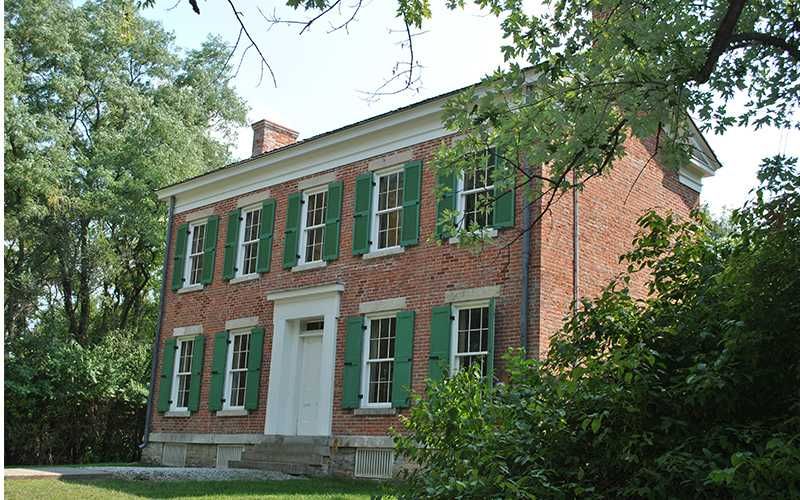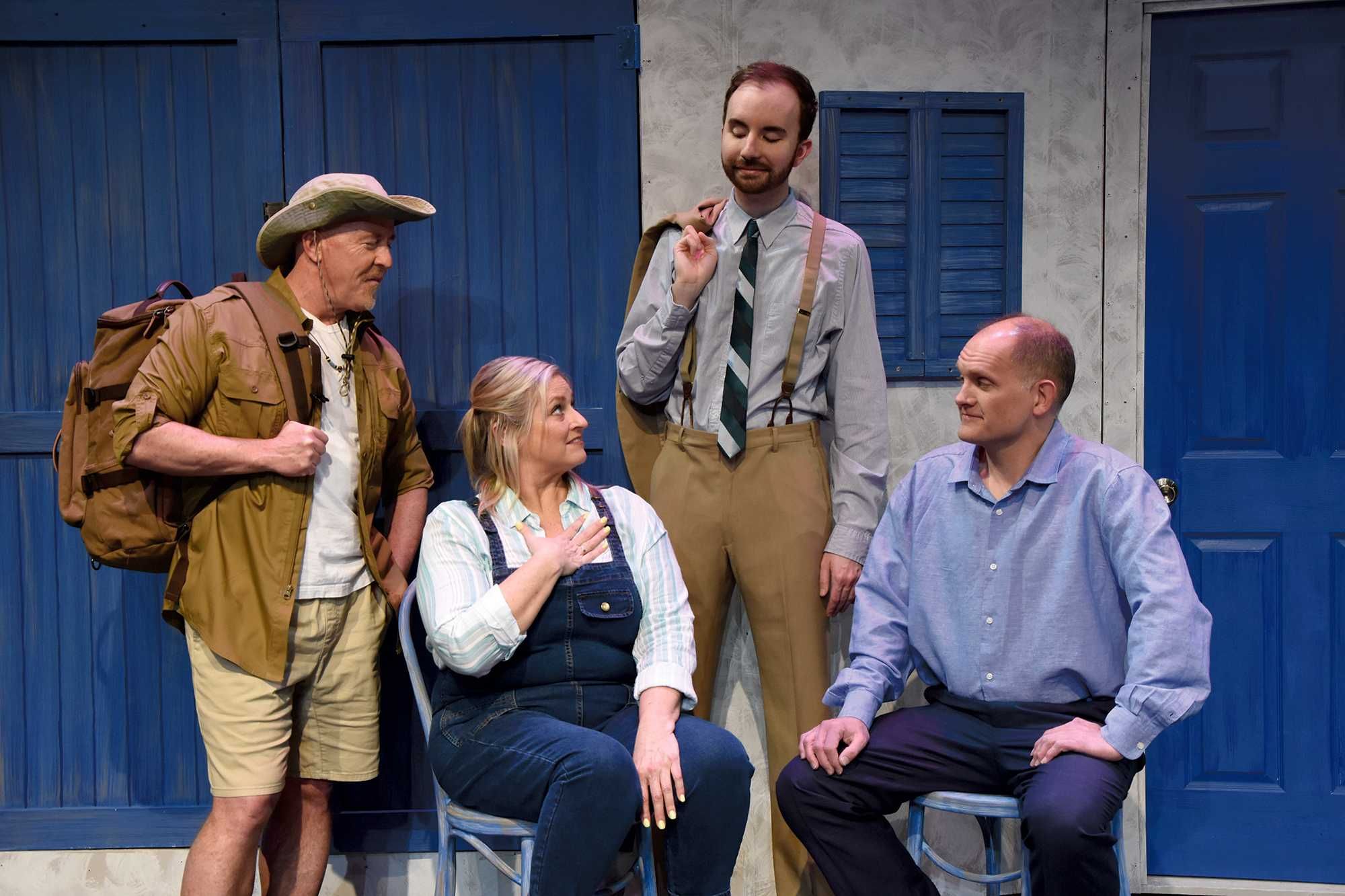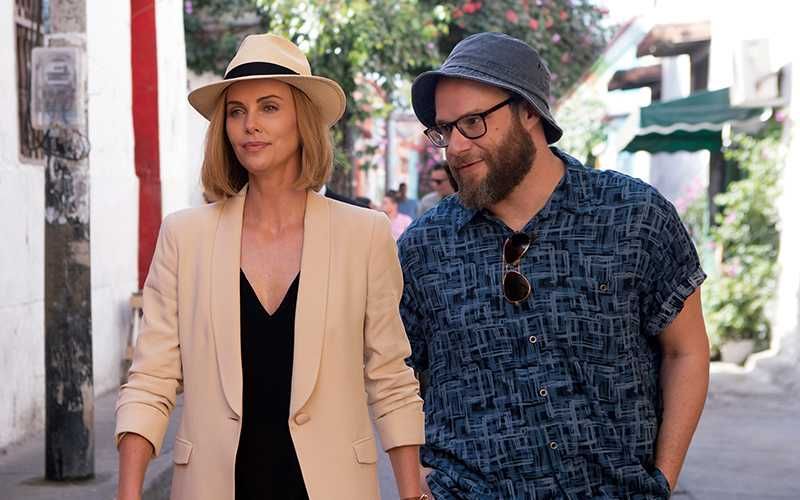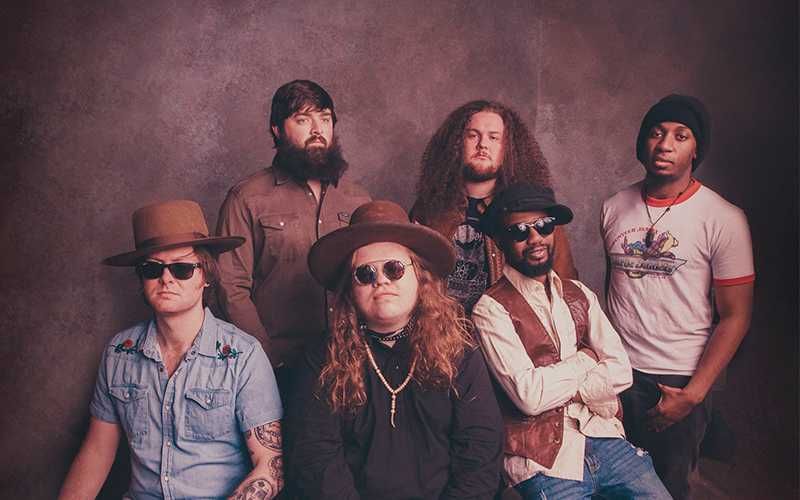It’s easy to drive by a historic house on Bluffton Road without a second glance, overlooking its significance and the contributions its owner made to our rich heritage.
That same property becomes hard to ignore, though, during a months-long celebration known as Miami Indian Heritage Days.
The series of events focuses, in part, on the contributions of Jean Baptiste de Richardville and takes place at his former house, which is now designated as a National Historic Landmark.
Significant History
“Chief Richardville is one of our community’s most significant, yet in many ways most ambiguous, historical figures,” explained Todd Pelfrey, the executive director of The History Center.
“Even today, Miami elders refer to him as a man who had one foot on either side of the river, meaning that he utilized the strengths of his dual lineage. He was half French and half Miami. His mother, Tacumwah, was incredibly powerful among the Miami. His father was a French soldier and trader.”
When Richardville became the civil chief of the Miami Indians, he used his knowledge of American law, politics and economics to give the Miami an unusually powerful position of permanence. It’s estimated that he controlled more than 20 square miles along the St. Joseph, St. Marys, Mississinewa, Salamonie, and Wabash rivers.
“During the negotiations for the 1826 Treaty of Mississinewa, Richardville was able to secure not only very large tracts of land but convince the federal government to build six private residences — one for himself and then five for his sub-chiefs — so when it came time for Richardville to select the spot where he wished to build his own home, he picked this area where he had spent a good amount of his youth,” said Pelfrey, of the land where the Richardville home now stands.
That land was often a refuge for other Miami Indians, and though Richardville died in 1841, about half of the Miami people were able to remain there when the tribe was officially moved in 1846 to Indian Territory west of the Mississippi River.
Highlighting the Heritage
The Allen County Fort Wayne History Center acquired the home in 1991 and spent about $400,000 to restore and stabilize it. It opened for public tours in 2004.
“We found that although many visitors enjoyed the architectural interpretation of the home, they really wanted something more,” Pelfrey said. “In 2007, we created the Miami Indian Heritage Days series to highlight not only the home, but different elements of Miami Indian culture, history, and heritage. Since we made that shift, our attendance has quadrupled.”
The Miami Indian Heritage Days series has become a popular way to teach visitors not just about the Richardville home, but also about the Miami people and what they mean to this region.
The Medicine Woman Singers kick off the 13th season on May 4. The group displays traditional drumming, singing, and dancing.
“The series itself is one of the rarest chances for local and regional Native American artists to demonstrate their skills,” Pelfrey said. “One of the things that we enjoy most about the Heritage Days series is that it’s never the same. With so many different aspects of Miami Indian culture to choose from, it can become a little tricky, selecting which programs to highlight each year. That’s what makes it interesting and attractive for guests to come back each year and see what’s new.”
As part of Miami Indian Heritage Days, the Richardville House is open for guided tours from 1-4 p.m. on the first Saturday of each month from May to November.
Admission is $7 for adults and $5 for seniors and children ages 3-17. History Center members and children under 3 are free.
Plus a November Event
Traders Days are free and take place Saturday, Nov. 2, from 10 a.m.-5 p.m. and Sunday, Nov. 3, from noon-4 p.m.
“This two-day event will feature fine quality hand-made Native American arts and crafts for sale by locally and nationally known Native America artists,” Pelfrey said.
“Among the items for sale will be fine art, gourd work, beadwork, carved wooden pieces, cornhusk dolls, Christmas ornaments, Native American shields, jewelry, clothing, feather work, and more. You can also enjoy the fry bread and buffalo stew cooked outside and enjoy the ambiance of native drumming and singing.”
 Submit Your Event
Submit Your Event




